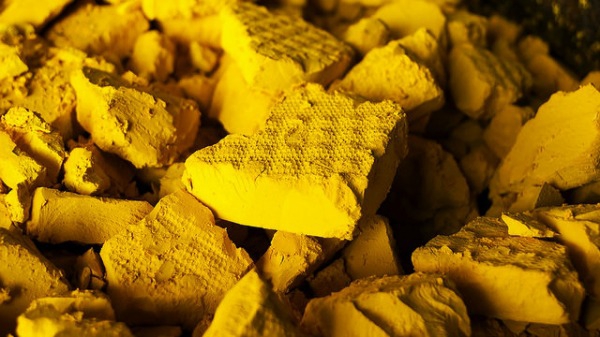
EXTRACTIVE metallurgists from Murdoch University have discovered the dissolution mechanism for a mineral previously considered to be unrecoverable and discarded as waste.
Brannerite (UTi2O6) is the most common refractory uranium mineral and accounts for up to 15 per cent of uranium currently unrecovered in extraction, translating into tens of millions of lost dollars for industry.
However, Dr Aleks Nikoloski and PhD candidate Rorie Gilligan have discovered how brannerite can be extracted relatively easily, all thanks to a counter-intuitive approach.
“The traditional wisdom in extractive metallurgy is that if you use more aggressive corrosive conditions, say by increasing the acid concentration, minerals will dissolve allowing the metal to come out, but it’s not the case with brannerite because of its chemical properties,” Dr Nikoloski says.
“While it can be extracted with high temperatures, high free acid concentrations and long leaching times, the process isn’t efficient or economical.
“By gaining an understanding of the chemical processes of brannerite, we have found a dissolution mechanism that supports effective extraction under relatively mild conditions.”
This discovery is the result of a thorough literature review by Mr Gilligan and several years of testing in the lab by a team lead by Dr Nikoloski.
Historical research acts as good springboard
“In doing my literature review, I found a number of largely forgotten studies from the 1950s and ‘60s looking at brannerite extraction,” Mr Gilligan says.
“We took these as a starting point and applied more current knowledge.
“We started by considering how brannerite behaves in the standard sulphuric acid/iron sulfate media and then looked at how it behaved when we introduced other substances, such as phosphates and fluoride, which are known to occur in natural deposits.
“There was no research into how these interacted with brannerite, so by taking a step-by-step approach we were able to better understand the mineral’s chemical processes.”
When Mr Gilligan applied this knowledge to extraction, the results prompted Dr Nikoloski to request that the samples be re-examined.
“I wanted to ensure we were using brannerite,” Dr Nikoloski says.
“At first I couldn’t believe the results. We were getting an extraction rate of 80 to 90 per cent for a mineral that was supposed to be refractory.”
Mr Gilligan says the amount of uranium that will be recovered from brannerite will depend on the geological composition of each ore deposit.
Brannerite is found in significant concentrations in deposits in Mount Isa, Queensland and Crocker Well in South Australia.
Note: The above post is reprinted from materials provided by ScienceNetwork WA..










